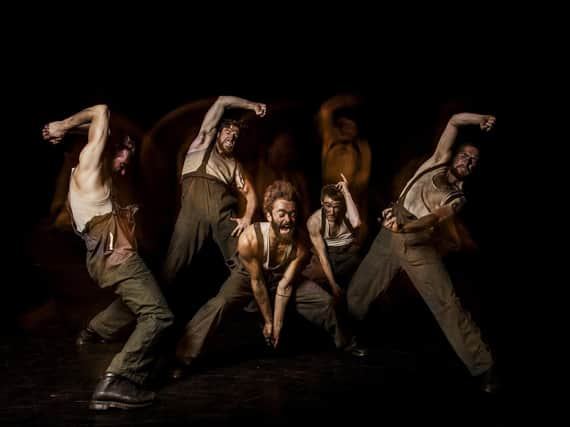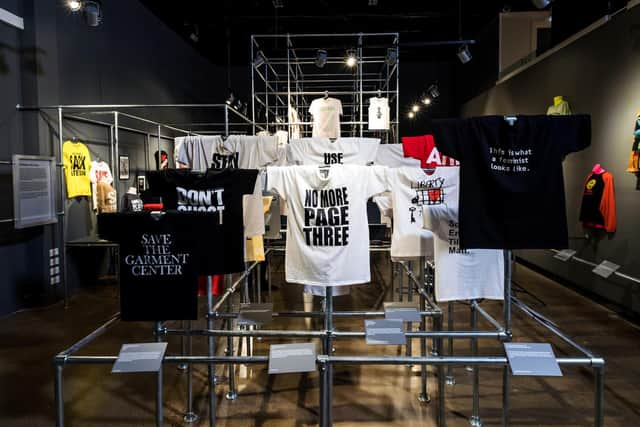Behind the scenes of the venue providing Barnsley with 'a culturally significant voice'


As we near the final curtain of a year that I suspect few will mourn the passing of, I arrive at the final stop of my 2020 journey around the theatre companies and venues that make Yorkshire cultural life.
Over the coming weeks, I’ll be looking at what festive offerings our theatres have managed to bring us, I’ll look back over this defining annus horribilis and will look forward to a year when we all hope our cultural calendars will return to the vibrant fullness of old.
Advertisement
Hide AdAdvertisement
Hide AdFor now, to Barnsley. Maybe the chip on my shoulder is showing, but it feels like Barnsley is all too often used as a punchline by the London-centric cultural world. To suggest the town is culturally bereft is to forget the contributions of sculptor Graham Ibbeson, of Sir Michael Parkinson and Dickie Bird. It’s to ignore Kate Rusby, Gary Clarke and Barry Hines and to forget that Barnsley has its very own bard, poet Ian McMillan.


It also ignores the venue at which I arrive on the virtual lockdown tour of 2020, Barnsley Civic, the leader of which has ‘a vision to position The Civic as an extraordinary destination for the arts’. Though my visits to The Civic haven’t come as regularly as they have to other venues, it is always impressive to see how boundary-pushing the work is at the venue.
“We hope to generate debate and encourage new ways of thinking for both those familiar with the arts and those new to this arena,” says CEO Helen Ball.
“The Civic exists to provide Barnsley and the surrounding communities with a culturally significant voice. Our aim is to present a progressive programme of festivals, exhibitions performance and events that relate to the area while also entertaining and encouraging debate.”
Advertisement
Hide AdAdvertisement
Hide AdThe venues we have across Yorkshire, as I hope the profiles I’ve been writing of them since March will attest, sit across a huge spectrum. The Civic is one of those venues that mainly hosts shows from elsewhere.
“We also have an evolving Artist Development programme and support regional artists in developing their practice, this could be through providing space, mentorship, bursaries or small seed commission,” says Ball.
The venue also has an impressive exhibition space – it is as likely to feature in the pages of Culture for an exhibition as for a performance. After it underwent a near total transformation in 2009, it reopened as a combined Arts Centre and has presented a mixture of more than 100 performances and exhibitions annually.
Ball says: “With our visual art programme we have staged at least ten temporary exhibitions each year; five in the main gallery and at least five on the smaller Panorama space. These are a mixture of touring exhibitions, exhibitions created specifically for the Civic either by the in-house team or in conjunction with local curators, and exhibitions by local emerging artists and makers.
Advertisement
Hide AdAdvertisement
Hide Ad“Our aim is to be forward-thinking in our choice of exhibitions, and to present the best of all aspects of art, craft, design and fashion to our audience. We hope to generate critical debate, expand boundaries and encourage change and development, both for those familiar with the arts and those new to this arena.”
While the chief of the venue has lofty ideals, there is no getting away from the image Barnsley has and also the reality of low cultural engagement. Ball was previously head of culture and visitor economy for the town council before being appointed head of the Civic in 2013.
“The Civic has been at the heart of Barnsley for over 150 years. Over that time, it has changed and adapted to suit the needs of the town and its community. I was excited to be the next custodian of this wonderful asset and take it forward into its next stage of development,” she says.
Since the 2009 reopening of the building it has shown impressive ambition. It worked in collaboration with the Fashion and Textile Museum to deliver and curate T-Shirt: Cult | Culture | Subversion – an exhibition charting the history and cultural significance of the t-shirt in the 20th century. It hosts Civic Scratch nights, a seasonal night for Yorkshire artists to showcase new ideas and work in development and a biennial weekend in which it presents four new pieces of work from emerging companies from the region in a double bill.
Advertisement
Hide AdAdvertisement
Hide Ad“Barnsley has been on a journey of regeneration itself since the 1980’s and now we have an exciting opportunity to ensure that arts and culture is at the heart of its future. The Civic was created for its community as an asset and resource for them to enjoy, use and benefit from. The building itself has evolved significantly through the years but has always been a place for arts, culture and education.
Originally the Barnsley Mechanics Institute and Public Hall built by Henry Harvey, the building was gifted to the people of Barnsley by his brother Charles Harvey and renamed the Harvey Institute. It was the heart of the community providing many forms of entertainment from variety shows to cinema.
“The pandemic has given us an opportunity to reflect on our programme and encouraged us to consider how we can improve our accessibility and continue to be relevant to our local and regional communities and audiences. The work we support and create does not need to necessarily be inside of our walls. When we can and do re-open, we want our audience to feel doubly welcome back inside and a part of our creative vision.”
Support The Yorkshire Post and become a subscriber today. Your subscription will help us to continue to bring quality news to the people of Yorkshire. In return, you'll see fewer ads on site, get free access to our app and receive exclusive members-only offers. Click here to subscribe.